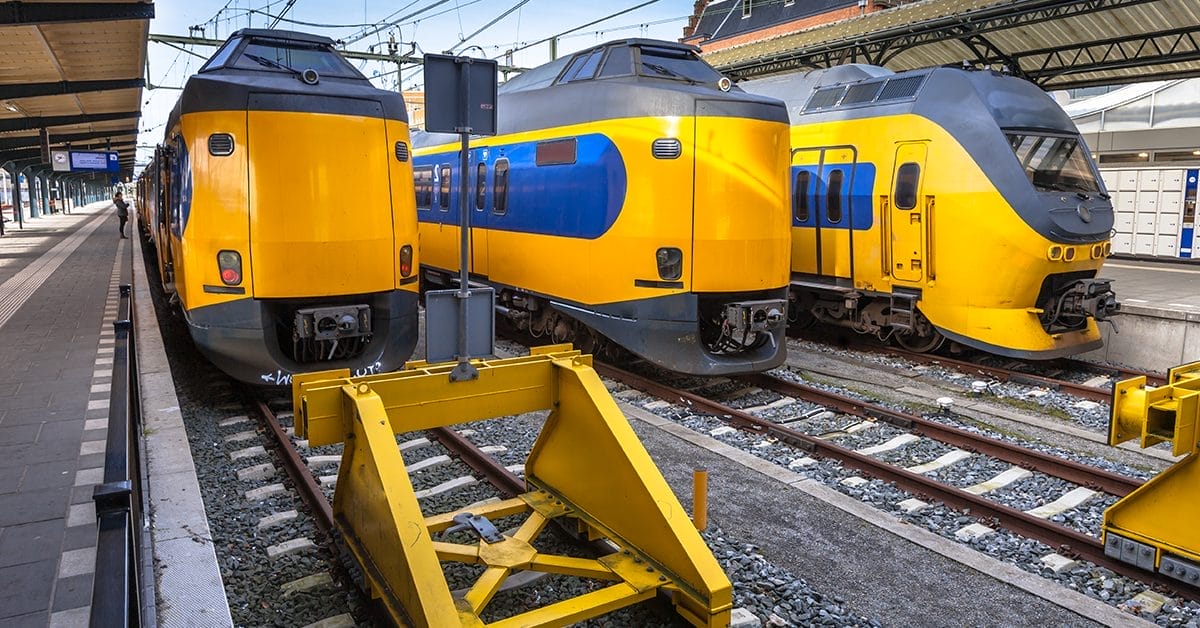Choo choo, all applications aboard! Application operational excellence on vessels, vehicles and beyond
In the fast-paced and competitive transportation industry, companies face the dual challenge of modernizing their logistics and embracing digital transformation. Edge computing emerges as a pivotal technology in this sector, enabling data processing closer to the point of origin for data thereby adding offline capabilities for critical applications, reducing latency and conserving bandwidth, to name a few. Applications are increasingly run across the transport industry in highly distributed fleets, including but not limited to:
- Cars or automotive
- Vessels and ships
- Buses
- Trucks
- Trains
- Aircrafts
For transportation companies, edge projects translates to quicker insights, improved management of logistics and fleet operations, and enhanced overall efficiency. Through modern application approaches and tools, companies can implement agile, scalable, and resilient systems crucial for managing complex transportation networks and fleets.
Keep reading: Avassa for Industrial IoT 💡
Technical Underpinnings: Crafting a Superior Edge Solution for the Transportation Industry
A successful edge computing implementation in transport involves integrating hardware and software seamlessly. This includes edge servers in vehicles and logistic hubs, IoT devices for tracking and monitoring, and a suite of managed applications. These applications perform tasks like real-time vehicle tracking, predictive maintenance, and efficient cargo management.
Key priorities for an edge computing solution in this sector should focus on:
- Manageability – deploying essential components efficiently across the transportation network to enhance performance and reduce complexity. Container applications enable transportation companies to update or modify features with minimal disruption, supporting a culture of rapid iterations and continuous integration/continuous deployment (CI/CD) pipelines.
- Resilience – ensuring robust applications capable of handling intermittent connectivity to central or cloud-based systems. Offline capabilities are essential, as any connectivity or infrastructure failure can significantly disrupt logistics and transportation operations.
- Security – a critical concern in the freight transport industry. The distributed nature of edge computing expands the potential attack surface, necessitating stringent security measures to protect assets and adhere to regulatory standards.
Utilizing edge computing for “on board” data processing allows for the use of AI and machine learning algorithms for real-time analytics and decision-making, essential for managing fleet operations, predicting maintenance needs, and ensuring efficient cargo or passenger handling.
Example use cases for edge computing in the transport industry
Edge computing is increasingly relevant in the transportation industry, offering various advantages due to its ability to process data closer to where it’s generated. Here are five pertinent use cases:
- Real-time Vehicle Tracking and Monitoring: Edge computing allows for the real-time tracking of vehicles. By processing GPS and sensor data locally, companies can monitor the exact location of their vehicles, assess travel times more accurately, and optimize routes. This data can also be used to monitor vehicle health, predict maintenance needs, and reduce downtime.
- Load and Cargo Monitoring: Sensors in freight vehicles can continuously monitor the condition of the cargo or the passengers, such as temperature, humidity, or movement, which is crucial. Edge computing enables the immediate processing of this data, ensuring that any deviations from the required conditions can be promptly addressed.
- Automated Fleet Management: Edge computing can enhance fleet management by processing data from various sensors in real time. This includes managing fuel consumption, optimizing routes based on traffic conditions, and even automating certain driving functions in advanced freight vehicles, leading to increased efficiency and reduced operational costs.
- Enhanced Security and Theft Prevention: By processing surveillance footage and sensor data locally, edge computing can quickly identify potential security breaches or unauthorized access. Immediate local alerts can trigger rapid response to prevent theft or tampering, which is especially important for high-value or sensitive shipments.
- Efficient Dock, Station and Warehouse Management: Edge computing can streamline operations at docks, stations and warehouses. Sensors and cameras can monitor and manage the movement of goods, optimizing loading and unloading processes, and ensuring efficient use of storage space. Real-time processing of this data can lead to quicker turnaround times, reducing wait times for freight vehicles and improving overall efficiency.
These use cases illustrate how edge computing in the transportation industry can lead to more efficient, secure, and responsive operations, significantly impacting the overall effectiveness of the supply chain.
Conclusion: Transportation Industry’s Guide to the Edge
For transport companies considering edge computing, the journey begins with evaluating specific needs and operational challenges. Identifying processes that benefit most from reduced latency and enhanced responsiveness is crucial, especially in areas involving fleet management and logistics.
Operational readiness is another vital aspect. These companies must embrace a culture of innovation and continuous improvement. Edge computing goes beyond hardware installation; it requires developing technical expertise to manage these decentralized systems effectively.
In summary, for transportation companies, adopting edge computing with container applications represents a strategic shift towards more efficient, responsive, and modernized logistics operations. By moving data processing closer to the action – in vehicles, vessels, trains or ferries – these companies can achieve unparalleled operational efficiency and reliability. As they embark on this edge journey, building a system as dynamic and robust as the transportation networks they operate is essential. Combining technical proficiency with strategic foresight is key to excelling in the era of edge computing in the transportation industry. All aboard!
Keep reading: Avassa for Industrial IoT 💡
LET’S KEEP IN TOUCH
Sign up for our newsletter
We’ll send you occasional emails to keep you posted on updates, feature releases, and event invites, and you can opt out at any time.

